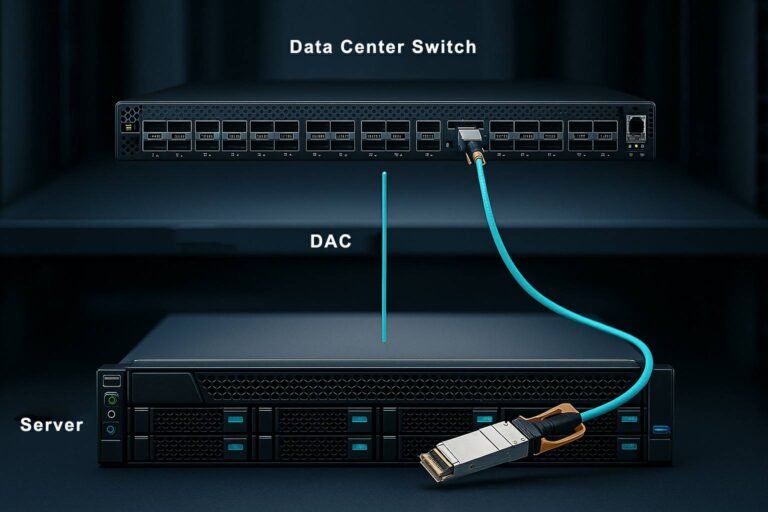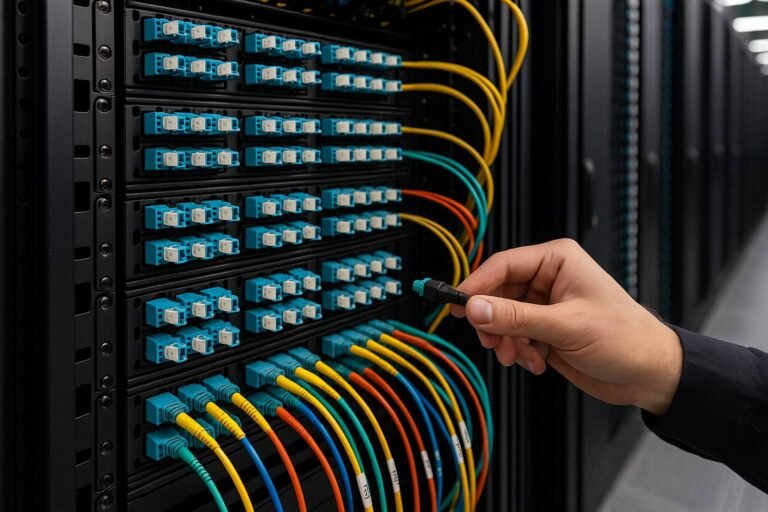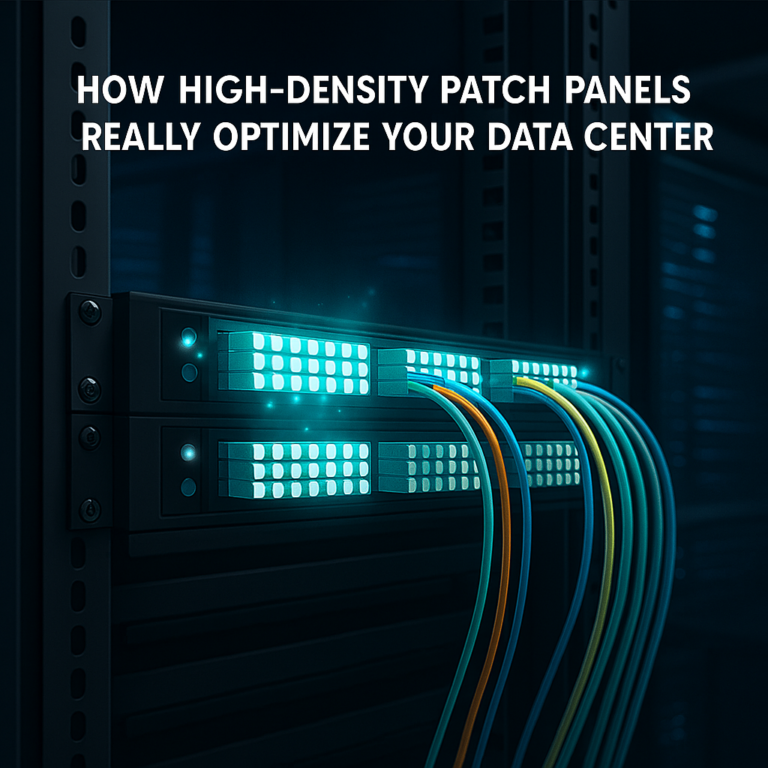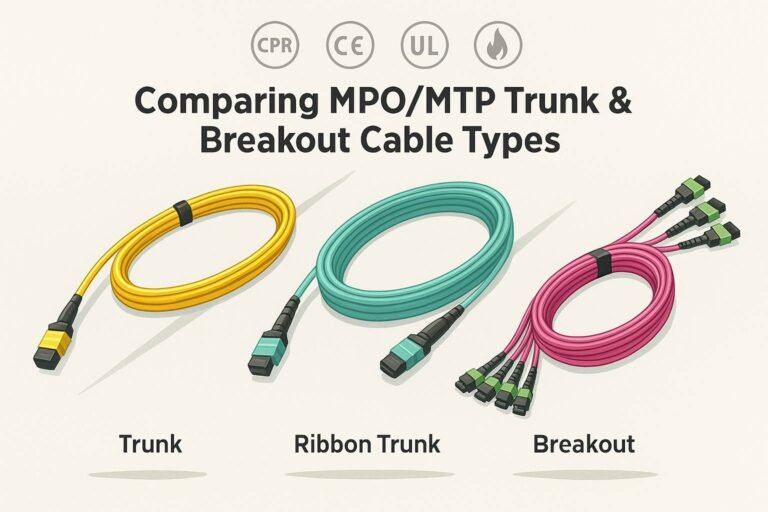How Does OPGW Cable Enhance Data Transmission?
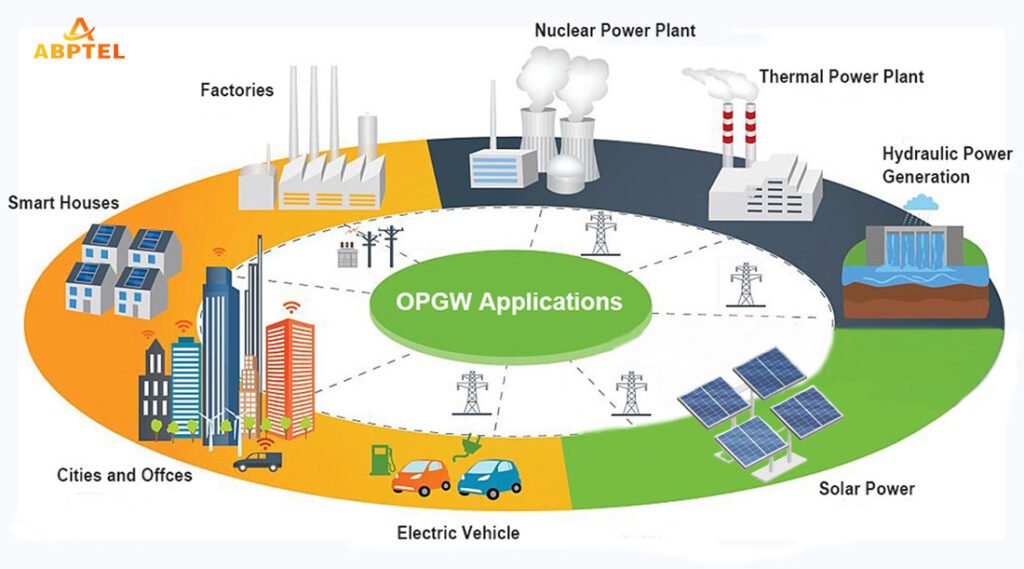
In today's fast-moving telecommunications world, I see more demands for better data transmission. I work at ABPTEL as Anya, and I have many years of experience in the fiber optic field. I notice how older methods often fail in terms of speed, stability, or cost-effectiveness. These problems lead to downtime, lost revenue, and various technical hurdles. I remember I once visited a large data center in Texas. I saw how the existing ground wires had no communication functions. The team there had to install extra cables for data transfer. That setup was not only expensive, but it also took a lot of time to maintain. This is when I saw a real need for an integrated solution, and OPGW cables were the answer.
I view Optical Ground Wire (OPGW) cables1 as a powerful solution in today's network infrastructure. They combine grounding and high-speed data functions. They can solve many issues in data centers, FTTA sites, and wide-ranging telecom setups. My company, ABPTEL, focuses on offering integrated fiber solutions, including OPGW for large-scale projects. As a one-stop telecom supplier, we know how crucial it is to have dependable solutions in power and data transmission.
OPGW cables enhance data transmission by combining grounding and optical fiber communication2. This dual functionality supports real-time, high-speed data transfer that is crucial for monitoring and control in power systems, while also providing resilience against electromagnetic interference3. These qualities are important for smart grid integration, efficient power management, and robust data center connections.
I imagine a world where power grids and data centers talk to each other in real time. That world depends on advanced cables. OPGW cables help me see that we can achieve both grounding and data transfer in a single cable. I want to share more about how these cables revolutionize the industry.
What Are the Dual Functionalities of OPGW Cables?
OPGW cables take a new approach by combining two important tasks. They serve as a grounding wire4 and also handle high-capacity data transmission. I see how this design streamlines the entire infrastructure. When I speak with data center managers, I often hear about the costs of installing separate grounding wires and fiber cables. OPGW solves that issue. They reduce the total number of cables that must be installed on transmission towers or in complex sites.
OPGW cables perform dual roles by acting as both grounding wires and enabling high-capacity data transmission. This dual functionality streamlines infrastructure needs, reduces costs, and increases the reliability of power transmission systems.
OPGW Dual Functionalities
I want to take a closer look at what "dual functionalities" really mean. I have visited many power stations and telecom towers around the world. I recall a job site in Brazil where local technicians faced problems during storms. The overhead ground wire alone did not help them monitor the system in real time. They needed frequent physical checks to spot faults. When we introduced OPGW, the team noticed that they could see early warnings from built-in optical fibers. That was a big leap in operational efficiency.
Key Benefits of Dual Functionality
- Reduced Cable Count: I have seen older setups that have multiple cables: one for grounding, one for data, and sometimes more for specialized monitoring. OPGW merges those needs.
- Lower Installation Costs: Crews only need to install and maintain one cable. This saves time and money.
- Improved Reliability: OPGW uses strong materials and is built to handle harsh environments. This improves overall system performance.
Table: Comparison of Single-Function Wires vs. OPGW
| Feature | Single-Function Wires | OPGW Cables |
|---|---|---|
| Grounding | Requires separate ground wire | Built-in grounding |
| Data Transmission | Separate fiber or copper cables | Integrated optical fibers |
| Installation Complexity | Higher (multiple cables) | Lower (single cable) |
| Maintenance Effort | More frequent checks | Fewer components to check |
| Overall Cost | Higher total investment | Lower total investment |
By acting as a traditional ground wire, OPGW ensures safety in high-voltage systems. In the same cable, it also provides high-speed data. This is essential for real-time data sharing in modern grids, data centers, or FTTA applications. I often tell my customers that if they only have overhead lines with a ground wire, then upgrading to OPGW can be a strategic move. This is because it simplifies the entire network, cuts costs, and boosts data capacity.

How Do High-Capacity Optical Fibers in OPGW Cables Enhance Data Transmission?
The high-capacity fibers inside OPGW cables are the foundation of modern data communication. In my experience, data center managers and FTTA project leaders often worry about bandwidth. They ask me, "Will these fibers handle future data loads?" I usually say yes. These fibers can accommodate high volumes of data, making them good for next-generation networking.
The high-capacity optical fibers in OPGW cables enable real-time data transmission, crucial for monitoring and managing power systems. This capability supports faster response times, better fault detection, and enhanced coordination in power networks.
High-Capacity Optical Fibers
I spend a lot of time explaining optical fibers to clients. Many want to know how fiber compares to copper or wireless solutions. I like to emphasize that fiber is more secure, transmits over longer distances, and has fewer signal losses. That is why OPGW is often chosen for high-voltage power lines. When we embed fiber in a strong outer layer, we get a cable that has two roles. This design is used in data centers to connect core switches or network equipment. It is also used in FTTA solutions, linking base stations to remote radio heads.
Specific Advantages of High-Capacity Fibers
- Greater Bandwidth: Fiber can carry large volumes of data. This is vital for data centers that manage big data or cloud computing tasks.
- Low Signal Loss: Optical signals travel farther without being affected by electromagnetic noise.
- Future Readiness: Many data center managers upgrade to 40G, 100G, or even 400G transmissions. OPGW can support these higher rates with suitable fiber types.
Table: High-Capacity Fiber Types and Characteristics
| Fiber Type | Typical Bandwidth | Maximum Distance (approx.) | Common Applications |
|---|---|---|---|
| G.652D (SMF) | 10G–100G+ | Up to 80 km | Long-haul data, core networks, OPGW in HV lines |
| OM3 (MMF) | 10G–40G | Up to 300 m | Data center internal links |
| OM4 (MMF) | 10G–100G | Up to 400 m | Higher-speed data center backbones |
| G.657A (SMF) | 10G–100G+ | Up to 80 km | Bends more easily, good for complicated pathways |
I once had a client in Mexico who managed a large wind farm. That farm used overhead power lines to link to the national grid. They required real-time SCADA data. We provided them with OPGW that had G.652D single-mode fibers. This allowed them to track wind turbine performance with very low latency. This gave them the ability to react quickly to any fault or change in power output.
How Does Real-Time Data Transfer Benefit Power Companies?
Real-time data gives power companies a clear view of grid operations. If a fault arises, they can see it right away and act fast. I have worked with many power operators who rely on constant data feedback to optimize generation, distribution, and load balancing. This is also important in data centers where quick detection of a link issue can prevent major server outages.
Real-time data transfer allows power companies to continuously monitor grid performance, enabling quick response to changes and ensuring system integrity. This capability is fundamental for effective grid management and reducing the risk of outages.
Real-Time Data Transfer
I remember an incident in China where a large substation experienced unexpected voltage spikes. The operators used old methods that gave data in intervals, not real time. The staff found out too late, and the damage to some equipment was already done. After that, the utility decided to install new OPGW lines. This gave them a continuous feed of data. It allowed them to detect unusual patterns and fix them promptly.
Operational Gains with Real-Time Transfer
- Instant Fault Detection: Real-time data highlights abnormal readings at once.
- Better Load Distribution: The system can redistribute load in seconds.
- Reduced Downtime: OPGW-based networks often catch problems before they escalate.
Table: Real-Time Data vs. Interval Data
| Data Type | Detection Speed | Risk of Missing Faults | Overall System Health |
|---|---|---|---|
| Real-Time Data | Immediate | Low | High |
| Interval-Based | Delayed (minutes) | Moderate to High | Lower |
The more I work with utilities, the more I see how real-time data is a game changer. It cuts operational costs, saves time, and increases system reliability. OPGW cables make that possible because they integrate fiber right into the power line, saving a lot of effort on separate data wiring.
How Do OPGW Cables Integrate with Smart Grids?
I often discuss the concept of smart grids with energy companies and data center managers. A smart grid needs constant data communication from sensors, generation plants, substations, and consumers. OPGW cables can help connect all these points. They facilitate better load management and advanced analytics.
OPGW cables are integral to smart grid integration, providing the communication infrastructure needed for real-time data transfer and efficient operation. They enable seamless coordination and management of power distribution.
OPGW Integration with Smart Grids
I see how smart grids improve resource use. They track peak loads, forecast demand, and even integrate renewable energy sources. OPGW cables help link these components. I have visited a project in Germany where solar farms are part of the national grid. Engineers needed quick data to balance solar input with conventional power. They used OPGW to connect each substation, which allowed them to see solar production in real time. This improved the entire country's power balance.
Smart Grid Functions That Rely on OPGW
- Demand Response: Consumers can shift usage in response to signals, which are sent through fiber.
- Automated Meter Reading: Utilities can gather meter data quickly without delay.
- Distributed Energy Resource Control: Solar, wind, and battery systems require real-time coordination.
Table: Smart Grid Services and OPGW's Role
| Smart Grid Service | Communication Needs | OPGW's Contribution |
|---|---|---|
| Demand Response | Real-time signals to customers | High-speed fiber for immediate alerts |
| Automated Meter Reading | Large-scale data polling | Reliable data channels at all nodes |
| Distributed Energy Control | Continuous monitoring of renewables | Instant data across wide areas |
| Outage Management | Quick fault detection | Consistent data flow to central system |
This seamless connectivity supports advanced grid management. It unites all the pieces of a network. It also helps data center operators who rely on stable power and want to feed real-time consumption data back to the utility. When I talk about synergy, OPGW is a clear illustration of how the power sector and telecom sector overlap.
Why Is Immunity to Electromagnetic Interference Important?
Electromagnetic interference (EMI) can corrupt signals. I have seen situations in heavily industrialized areas where copper lines picked up so much noise that data became unusable. This leads to downtime and confusion. OPGW cables have fiber that is not affected by EMI the same way. This means a cleaner signal path, which is a relief for data center managers or telecom operators who want stable, high-speed connections.
Immunity to electromagnetic interference in OPGW cables ensures uninterrupted data transmission, crucial for reliable grid operations. This feature enhances system performance and reduces the risk of communication failures.
EMI Immunity
I recall a petroleum refinery in the Middle East that struggled with massive EMI. The refineries had powerful motors, pumps, and large transformers. Conventional copper communication lines kept failing. The company replaced them with OPGW. This eliminated data interference. It also boosted safety because the fiber-based cable did not carry large induced currents. The engineers were happy to see stable network connections for their process control systems.
Key Points About EMI in Large Networks
- Source of EMI: High-voltage lines, heavy machinery, electromagnetic fields from motors.
- Impact on Data: Noise, corrupted packets, or total signal loss.
- Fiber Advantage: Light pulses inside fiber are unaffected by electromagnetic fields.
Table: EMI Susceptibility for Different Cable Types
| Cable Type | EMI Susceptibility | Typical Use Case |
|---|---|---|
| Copper Twisted Pair | High | Standard LAN wiring |
| Coaxial Cable | Moderate | Cable TV or older networking |
| Shielded Copper | Lower than unshielded | Industrial environments |
| Optical Fiber (in OPGW) | Very Low | High-voltage, high-EMI environments |
This immunity is essential for applications in FTTA, data centers, or large-scale industrial sites. It helps ensure consistent performance. I always recommend OPGW or other fiber-based cables when electromagnetic noise is a concern. That is often the case in modern energy grids or big manufacturing zones.
How Do OPGW Cables Enhance Grid Resilience and Efficiency?
I talk about resilience a lot when I work with data center operators or power companies. Grid resilience means the system can handle changes or problems without losing service. OPGW cables create a strong communication backbone. This backbone informs operators about the grid state. When they see a problem, they can respond faster. This lowers the chance of massive outages.
OPGW cables enhance grid resilience and efficiency by providing a robust communication network that minimizes power outages and reduces downtime. This capability is crucial for maintaining a stable and efficient power supply.
Grid Resilience and Efficiency
Resilience is not only about reacting to problems. It is also about preventing them. OPGW cables have optical fibers that enable proactive monitoring. I have seen scenarios where advanced diagnostic tools continuously scan for anomalies in voltage or frequency. This is common in data centers where server loads can fluctuate quickly, or in telecom towers where constant uptime is critical for voice and data traffic.
Methods for Enhanced Resilience
- Predictive Maintenance: Optical fibers in OPGW can carry sensor data. Operators can see if a certain line is under stress.
- Automated Switching: The system can reroute power when it detects a fault.
- Real-Time Data Sharing Across Regions: Large power networks can coordinate their operations.
Table: Efficiency Gains With OPGW
| Efficiency Aspect | How OPGW Helps | Example |
|---|---|---|
| Reduced Downtime | Faster fault detection and response | Automated switchgear triggers |
| Better Resource Allocation | Instant data on load, demand, and supply | Load balancing in real time |
| Lower Maintenance Costs | Integrated system requires fewer repairs | Single cable, simpler routine checks |
| Faster Commissioning | Single installation for ground + fiber | Quick project timeline |
I see how these improvements go beyond the transmission line. Data centers connected through OPGW-based grids often see more stable incoming power. FTTA deployments also benefit from the reliable data lines that run up to the towers. When all these elements come together, it creates a more efficient environment that saves money and prevents downtime.
Conclusion
Optical Ground Wire (OPGW) cables are changing how I view data transmission in modern power systems and data centers. They solve several problems by merging grounding with high-capacity communication. The embedded optical fibers inside OPGW cables support real-time data streams, which power companies and data centers rely on for stable operations.
I see these cables as essential in the evolution of smart grids, especially when I consider the increasing demands for real-time data, flexible load management, and advanced analytics. OPGW cables are also strong against electromagnetic interference, ensuring uninterrupted data flow. This increases the resilience of large networks. It minimizes outages and downtime, which is vital for any modern power and communication infrastructure.
ABPTEL, where I work, offers OPGW cables and many other fiber solutions. We help clients around the globe, from the United States to Africa, Europe, and Asia. Our B2B model supports OEM/ODM needs. We run 10 production lines and have 100 trained workers. We do extensive testing in our labs to make sure our cables, including OPGW, meet stringent standards. We believe this robust communication backbone will continue to shape the future of power distribution, data center interconnections, and FTTA networks. In my view, OPGW is not just a cable. It is a key to a safer, more efficient, and more connected world.
-
Provides an overview of OPGW cables' role and advantages in power systems. ↩
-
Explains optical fiber communication's significance and how it improves data transmission. ↩
-
Describes the impact of EMI on data transmission and how immunity enhances reliability. ↩
-
Details the function of grounding wires, crucial for electrical system safety. ↩

